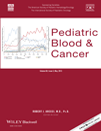Abstract
Background
Shwachman-Diamond syndrome (SDS) is characterized by hypoplasia of the bone marrow and exocrine pancreas and a high risk of leukemia. It is unknown whether solid tumors are part of the disease phenotype.
Procedure
We performed copy number alterations using Affymetrix human SNP 6.0 array. Furthermore, we did direct sequencing of pancreatic cancer-related genes and immunohistochemical expression of selective proteins.
Results
Among 41 patients with SDS who enrolled on the registry, we identified one male patient with a solid tumor: moderately differentiated pancreatic ductal adenocarcinoma. The tumor harbored 41 copy number alterations (CNAs) and had no regions of loss of heterozygosity (LOH). None of these CNAs were exclusive to the tumor. One copy of the tumor suppressor genes CTNNA3 and LGALS9C was lost in both the peripheral blood and tumor. Direct sequencing of TP53, KRAS, and NRAS revealed no mutations. Immunohistochemical staining for cyclin D1, E-cadherin, p53 MLH1 and MSH2 and β-catenin, was similar to that seen in non-hereditary pancreatic cancer.
Conclusions
Our case raises the possibility that solid tumors are associated with SDS, thereby broadening the clinical phenotype of the disease. The relatively young age at cancer diagnosis and the specific involvement of the pancreas make the possibility of an association with SDS likely. Similar to leukemia in SDS, the pancreatic cancer developed in hypoplastic tissues. This observation and the relative genomic stability of the tumor strengthen the hypothesis of improved adaptation of malignant clones among a population of disadvantaged cells as a mechanism for tumor expansion in SDS. Pediatr Blood Cancer 2013; 60: 754–760. © 2013 Wiley Periodicals, Inc.




